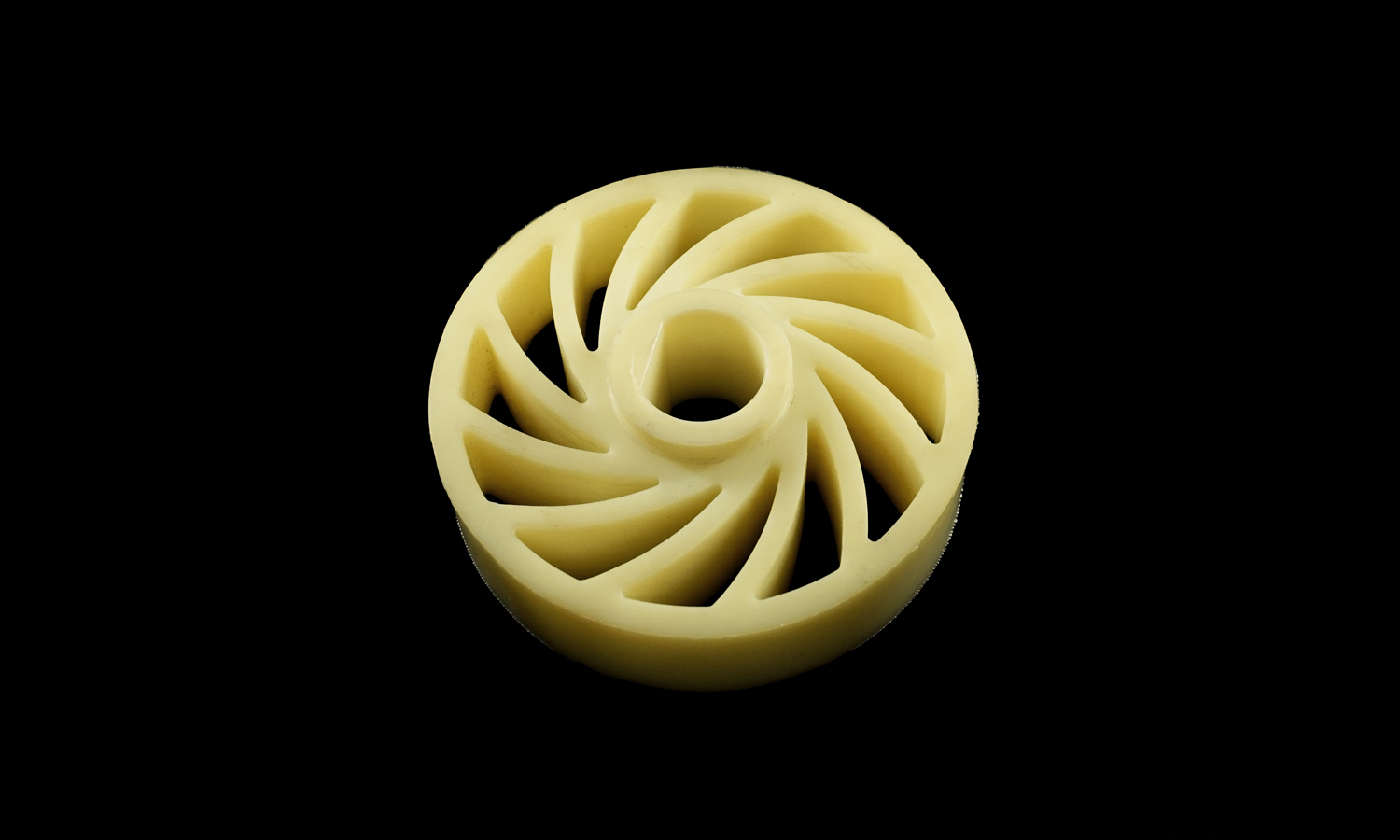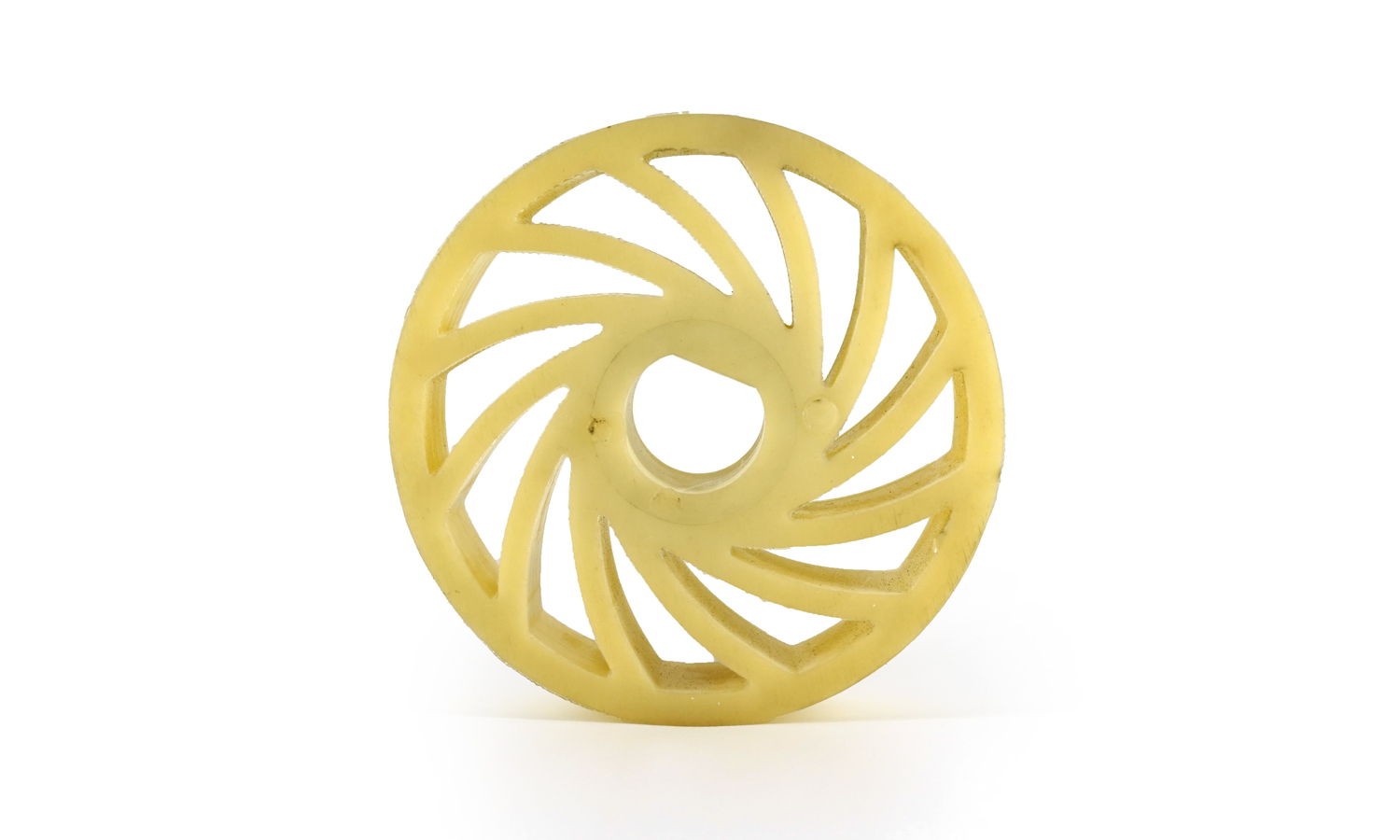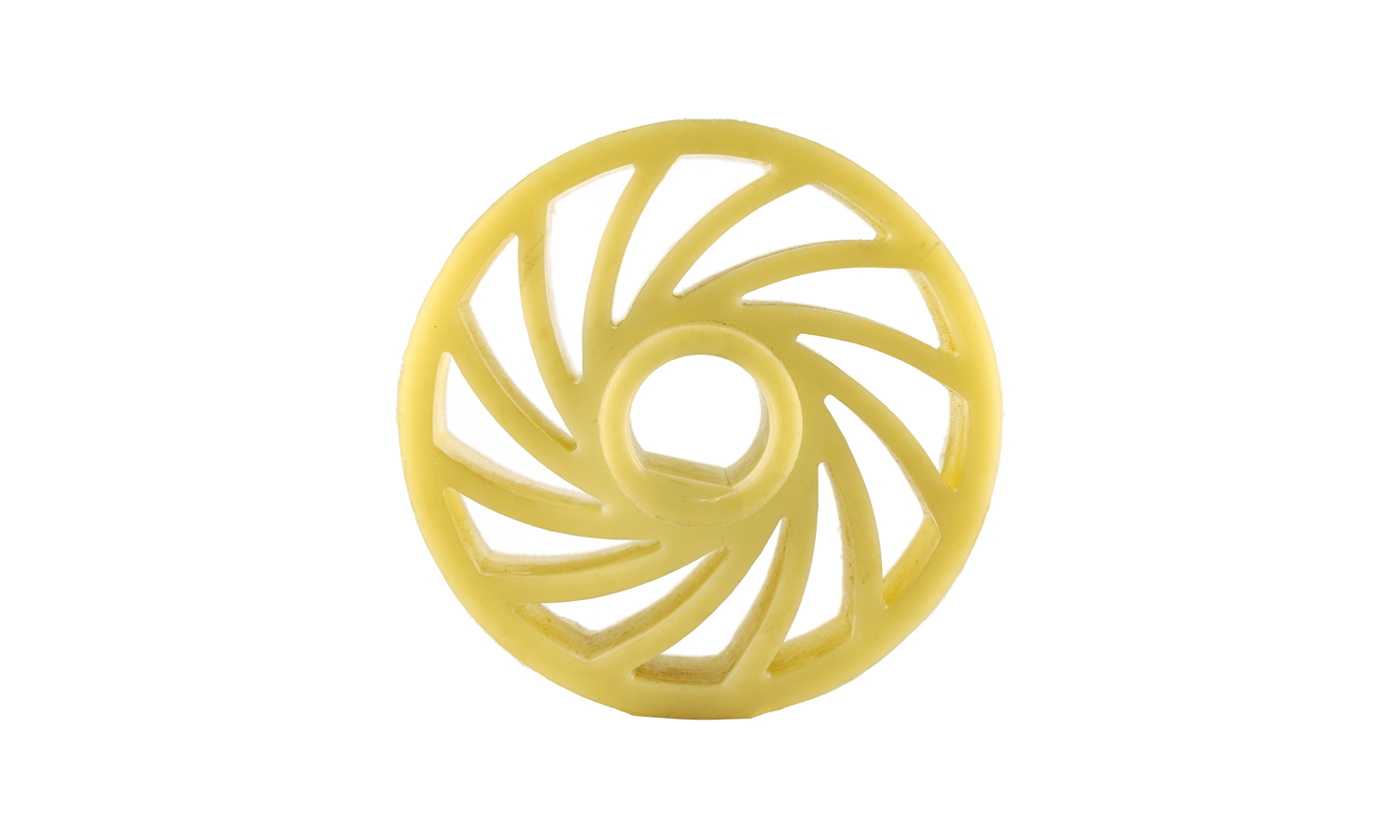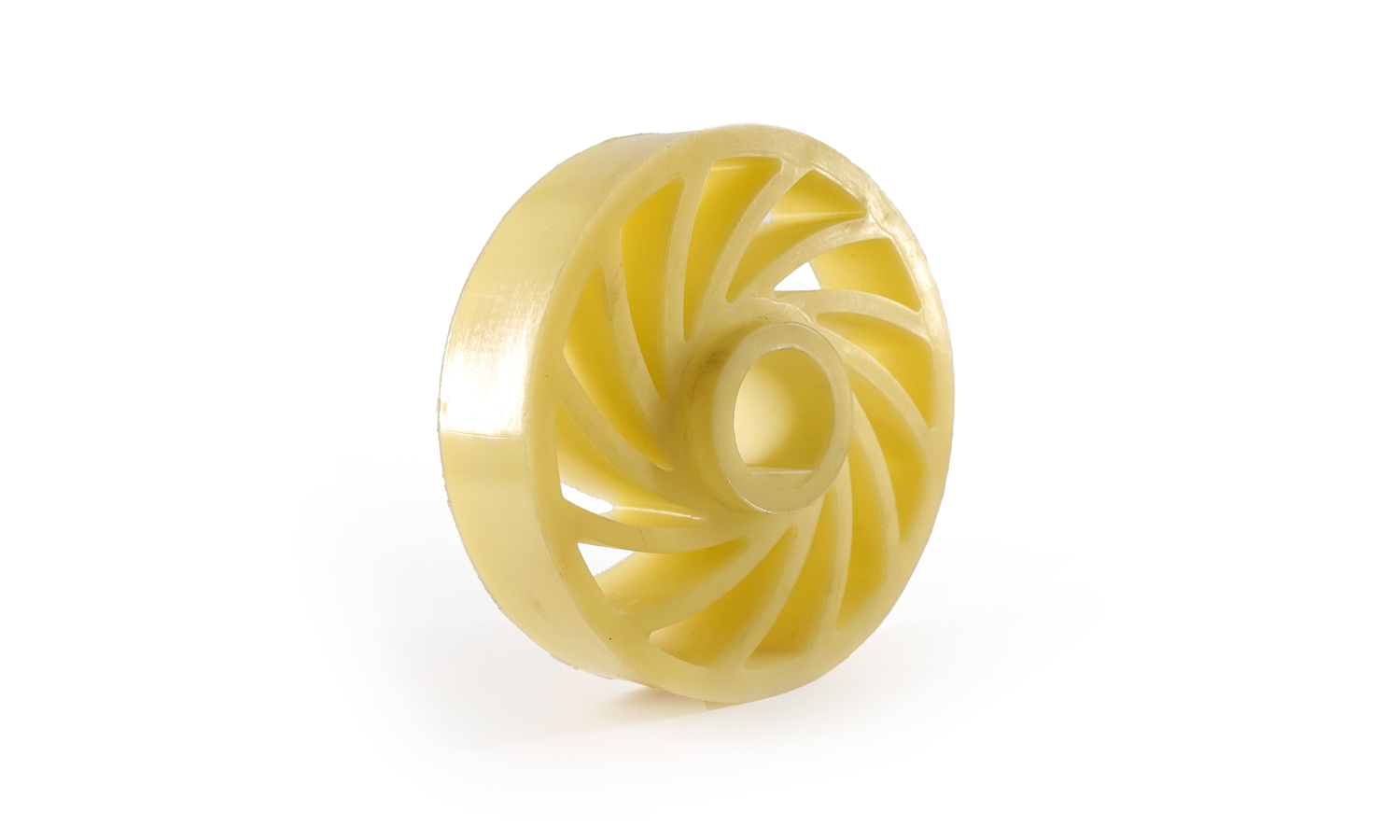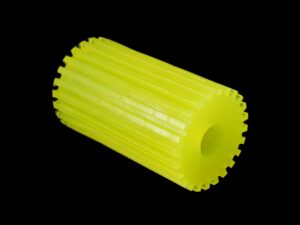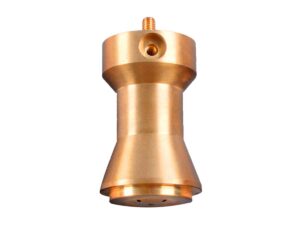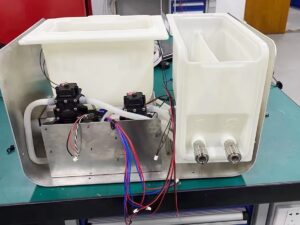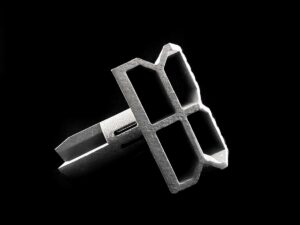Material Rubber
Quantity 28 pcs
Price Range $100-1,000
Lead Time 3 workdays
Gallery
About Project
In the high-stakes world of printing, precision and reliability are paramount. Every component, no matter how small, plays a crucial role in ensuring smooth operation and high-quality output. One such component is the polyurethane pressing wheel, often found in various paper handling and transport mechanisms within printing machines.
The image above showcases a typical example of such a wheel. This seemingly simple part is a symmetrical, wheel-like object made from durable polyurethane. Key features include its smooth outer circumference, six strategically placed curved cutouts, and a uniquely shaped central bore – hexagonal or a rounded hexagon, rather than perfectly circular. This non-circular bore is a critical design element, ensuring a secure fit onto a correspondingly shaped shaft, preventing slippage, and enabling efficient torque transfer.
Usage in Printing Machines
Polyurethane pressing wheels like this one serve several vital functions within printing equipment:
- Paper Transport: These wheels often form part of a roller system that precisely guides and advances paper through the printing process. The smooth polyurethane surface provides excellent grip without damaging the paper, ensuring consistent and accurate feeding.
- Pressure Application: In certain printing applications, these wheels may be incorporated into pressure nips, where they apply controlled pressure to the paper as it passes between rollers. This pressure is essential for proper ink transfer, adhesion, and overall print quality.
- Alignment and Support: Beyond direct paper contact, these wheels can also act as guides or supports for belts, wires, or other components within the printing machine, maintaining alignment and minimizing friction.
The Reaction Injection Molding (RIM) Advantage
The precision and durability required for these pressing wheels make Reaction Injection Molding (RIM) an ideal manufacturing process. RIM involves mixing two or more liquid reactants (typically a polyol and an isocyanate) at high speed and injecting the mixture into a closed mold. The ensuing chemical reaction creates the solid polyurethane part.
Why RIM is Suitable for this Application
- Precision and Detail: RIM allows for the creation of parts with intricate details, including the critical hexagonal bore and the smooth surface finish essential for paper contact.
- Durability and Abrasion Resistance: Polyurethane offers excellent abrasion resistance, ensuring the wheel can withstand the constant friction and wear associated with paper transport. RIM allows for the specific formulation of polyurethane to meet these demands.
- High-Volume Production: For commonly used parts like these wheels, RIM enables efficient and cost-effective high-volume manufacturing.
- Material Properties Tailoring: RIM allows for the manipulation of the polyurethane’s properties, such as hardness and flexibility, to optimize its performance for specific printing applications.
Need custom polyurethane parts for your printing equipment? FacFox offers professional Reaction Injection Molding (RIM) services to bring your designs to life. From prototyping to large-scale production, FacFox combines expertise and cutting-edge technology to deliver high-quality RIM parts that meet your exact specifications. Contact FacFox today to discuss your next project!
Solution
- Step 1: Molds were designed and fabricated to the precise dimensions of the desired wheel, including the hexagonal bore and curved cutouts. Typically, these molds were made from a durable material like aluminum or steel.
- Step 2: A release agent was applied to the mold surfaces to facilitate easy removal of the finished part.
- Step 3: Two or more liquid reactants, typically a polyol and an isocyanate, were precisely metered and mixed together at high speed. This mixture formed the polyurethane precursor.
- Step 4: The reactive mixture was injected into the closed mold cavity under high pressure using specialized RIM equipment.
- Step 5: The chemical reaction was allowed to proceed within the mold, causing the polyurethane to solidify and take the shape of the mold cavity. This process is known as curing.
- Step 6: Once cured, the mold was opened, and the solidified polyurethane wheel was carefully removed.
- Step 7: Excess material, such as the sprue and runners from the injection process, was trimmed and removed.
- Step 8: Any necessary post-processing steps were performed, such as surface finishing or additional machining to achieve precise tolerances.
- Step 9: The finished polyurethane wheel was inspected for quality and dimensional accuracy before being packaged and shipped.
